Cover
A Roadmap for Selectinga Statistical Method
Title Page
Copyright Page
Dedication Page
About the Authors
Brief Contents
Contents
Preface
Resources for Success
First Things First
Using Statistics: “The Price of Admission”
Now Appearing on Broadway . . . and Everywhere Else
FTF.1 Think Differently About Statistics
Statistics: A Way of Thinking
Analytical Skills More Important than Arithmetic Skills
Statistics: An Important Part of Your Business Education
FTF.2 Business Analytics: The Changing Face of Statistics
“Big Data”
Structured Versus Unstructured Data
FTF.3 Getting Started Learning Statistics
Statistic
Can Statistics (pl., Statistic) Lie?
FTF.4 Preparing to Use Microsoft Excel for Statistics
Reusability Through Recalculation
Practical Matters: Skills You Need
Ways of Working with Excel
Excel Guides
Which Excel Version to Use?
Conventions Used
References
Key Terms
Excel Guide
EG.1 Entering Data
EG.2 Reviewing Worksheets
EG.3 If You Plan to Use the Workbook Instructions
1 Defining and Collecting Data
Using Statistics: Defining Moments
1.1 Defining Variables
Classifying Variables by Type
Measurement Scales
1.2 Collecting Data
Populations and Samples
Data Sources
1.3 Types of Sampling Methods
Simple Random Sample
Systematic Sample
Stratified Sample
Cluster Sample
1.4 Data Preparation
Data Cleaning
Data Formatting
Stacked and Unstacked Variables
Recoding Variables
1.5 Types of Survey Errors
Coverage Error
Nonresponse Error
Sampling Error
Measurement Error
Ethical Issues About Surveys
Consider This: New Media Surveys/Old Survey Errors
Using Statistics: Defining Moments, Revisited
Summary
References
Key Terms
Checking Your Understanding
Chapter Review Problems
Cases For Chapter 1
Managing Ashland MultiComm Services
CardioGood Fitness
Clear Mountain State Student Survey
Learning with the Digital Cases
Chapter 1 Excel Guide
EG1.1 Defining Variables
EG1.2 Collecting Data
EG1.3 Types of Sampling Methods
2 Organizing and Visualizing Variables
Using Statistics: “The Choice Is Yours”
2.1 Organizing Categorical Variables
The Summary Table
The Contingency Table
2.2 Organizing Numerical Variables
The Frequency Distribution
Classes and Excel Bins
The Relative Frequency Distribution and the Percentage Distribution
The Cumulative Distribution
2.3 Visualizing Categorical Variables
The Bar Chart
The Pie Chart and the Doughnut Chart
The Pareto Chart
Visualizing Two Categorical Variables
2.4 Visualizing Numerical Variables
The Stem-and-Leaf Display
The Histogram
The Percentage Polygon
The Cumulative Percentage Polygon (Ogive)
2.5 Visualizing Two Numerical Variables
The Scatter Plot
The Time-Series Plot
2.6 Organizing and Visualizing a Mix of Variables
Multidimensional Contingency Table
Adding a Numerical Variable to a Multidimensional Contingency Table
Drill Down
Excel Slicers
PivotChart
Sparklines
2.7 The Challenge in Organizing and Visualizing Variables
Obscuring Data
Creating False Impressions
Chartjunk
EXHIBIT: Best Practices for Creating Visualizations
Using Statistics: The Choice Is Yours, Revisited
Summary
References
Key Equations
Key Terms
Checking Your Understanding
Chapter Review Problems
Cases For Chapter 2
Managing Ashland MultiComm Services
Digital Case
CardioGood Fitness
The Choice Is Yours Follow-Up
Clear Mountain State Student Survey
Chapter 2 Excel Guide
EG2.1 Organizing Categorical Variables
EG2.2 Organizing Numerical Variables
EG2.3 Visualizing Categorical Variables
EG2.4 Visualizing Numerical Variables
EG2.5 Visualizing Two Numerical Variables
EG2.6 Organizing and Visualizing a Set of Variables
3 Numerical Descriptive Measures
Using Statistics: More Descriptive Choices
3.1 Central Tendency
The Mean
The Median
The Mode
The Geometric Mean
3.2 Variation and Shape
The Range
The Variance and the Standard Deviation
EXHIBIT: Manually Calculating the Sample Variance, S2, and Sample Standard Deviation, S
The Coefficient of Variation
Z Scores
Shape: Skewness
Shape: Kurtosis
3.3 Exploring Numerical Data
Quartiles
EXHIBIT: Rules for Calculating the Quartiles from a Set of Ranked Values
The Interquartile Range
The Five-Number Summary
The Boxplot
3.4 Numerical Descriptive Measures for a Population
The Population Mean
The Population Variance and Standard Deviation
The Empirical Rule
Chebyshev’s Theorem
3.5 The Covariance and the Coefficient of Correlation
The Covariance
The Coefficient of Correlation
3.6 Statistics: Pitfalls and Ethical Issues
Using Statistics: More Descriptive Choices, Revisited
Summary
References
Key Equations
Key Terms
Checking Your Understanding
Chapter Review Problems
Cases For Chapter 3 136
Managing Ashland MultiComm Services
Digital Case
CardioGood Fitness
More Descriptive Choices Follow-up
Clear Mountain State Student Survey
Chapter 3 Excel Guide
EG3.1 Central Tendency
EG3.2 Variation and Shape
EG3.3 Exploring Numerical Data
EG3.4 Numerical Descriptive Measures for a Population
EG3.5 The Covariance and the Coefficient of Correlation
4 Basic Probability
Using Statistics: Possibilities at M&R Electronics World
4.1 Basic Probability Concepts
Events and Sample Spaces
Contingency Tables
Simple Probability
Joint Probability
Marginal Probability
General Addition Rule
4.2 Conditional Probability
Computing Conditional Probabilities
Decision Trees
Independence
Multiplication Rules
Marginal Probability Using the General Multiplication Rule
4.3 Ethical Issues and Probability
4.4 Bayes’ Theorem
Consider This: Divine Providence and Spam
4.5 Counting Rules
Using Statistics: Possibilities at M&R Electronics World, Revisited
Summary
References
Key Equations
Key Terms
Checking Your Understanding
Chapter Review Problems
Cases For Chapter 4
Digital Case
CardioGood Fitness
The Choice Is Yours Follow-Up
Clear Mountain State Student Survey
Chapter 4 Excel Guide
EG4.1 Basic Probability Concepts
EG4.4 Bayes’ Theorem
5 Discrete Probability Distributions
Using Statistics: Events of Interest at Ricknel Home Centers
5.1 The Probability Distribution for a Discrete Variable
Expected Value of a Discrete Variable
Variance and Standard Deviation of a Discrete Variable
5.2 Binomial Distribution
5.3 Poisson Distribution
5.4 Covariance of a Probability Distribution and its Application in Finance
5.5 Hypergeometric Distribution
Using Statistics: Events of Interest…, Revisited
Summary
References
Key Equations
Key Terms
Checking Your Understanding
Chapter Review Problems
Cases For Chapter 5
Managing Ashland MultiComm Services
Digital Case
Chapter 5 Excel Guide
EG5.1 The Probability Distribution for a Discrete Variable
EG5.2 Binomial Distribution
EG5.3 Poisson Distribution
6 The Normal Distribution and Other Continuous Distributions
Using Statistics: Normal Load Times at MyTVLab
6.1 Continuous Probability Distributions
6.2 The Normal Distribution
EXHIBIT: Normal Distribution Important Theoretical Properties
Computing Normal Probabilities
VISUAL EXPLORATIONS: Exploring the Normal Distribution
Finding X Values
Consider This: What Is Normal?
6.3 Evaluating Normality
Comparing Data Characteristics to Theoretical Properties
Constructing the Normal Probability Plot
6.4 The Uniform Distribution
6.5 The Exponential Distribution
6.6 The Normal Approximation to the Binomial Distribution
Using Statistics: Normal Load Times…, Revisited
Summary
References
Key Equations
Key Terms
Checking Your Understanding
Chapter Review Problems
Cases For Chapter 6
Managing Ashland MultiComm Services
CardioGood Fitness
More Descriptive Choices Follow-up
Clear Mountain State Student Survey
Digital Case
Chapter 6 Excel Guide
EG6.1 Continuous Probability Distributions
EG6.2 The Normal Distribution
EG6.3 Evaluating Normality
7 Sampling Distributions
Using Statistics: Sampling Oxford Cereals
7.1 Sampling Distributions
7.2 Sampling Distribution of the Mean
The Unbiased Property of the Sample Mean
Standard Error of the Mean
Sampling from Normally Distributed Populations
Sampling from Non-normally Distributed Populations— The Central Limit Theorem
EXHIBIT: Normality and the Sampling Distribution of the Mean
VISUAL EXPLORATIONS: Exploring Sampling Distributions
7.3 Sampling Distribution of the Proportion
Using Statistics: Sampling Oxford Cereals, Revisited
Summary
References
Key Equations
Key Terms
Checking Your Understanding
Chapter Review Problems
Cases For Chapter 7
Managing Ashland Multicomm Services
Digital Case
Chapter 7 Excel Guide
EG7.2 Sampling Distribution of the Mean
8 Confidence Interval Estimation
Using Statistics: Getting Estimates at Ricknel Home Centers
8.1 Confidence Interval Estimate for the Mean (s Known)
Can You Ever Know the Population Standard Deviation?
8.2 Confidence Interval Estimate for the Mean (s Unknown)
Student’s t Distribution
Properties of the t Distribution
The Concept of Degrees of Freedom
The Confidence Interval Statement
8.3 Confidence Interval Estimate for the Proportion
8.4 Determining Sample Size
Sample Size Determination for the Mean
Sample Size Determination for the Proportion
8.5 Confidence Interval Estimation and Ethical Issues
8.6 Application of Confidence Interval Estimation in Auditing
8.7 Estimation and Sample Size Estimation for Finite Populations
8.8 Bootstrapping
Using Statistics: Getting Estimates. . ., Revisited
Summary
References
Key Equations
Key Terms
Checking Your Understanding
Chapter Review Problems
Cases For Chapter 8
Managing Ashland MultiComm Services
Digital Case
Sure Value Convenience Stores
CardioGood Fitness
More Descriptive Choices Follow-Up
Clear Mountain State Student Survey
Chapter 8 Excel Guide
EG8.1 Confidence Interval Estimate for the Mean (s Known)
EG8.2 Confidence Interval Estimate for the Mean (s Unknown)
EG8.3 Confidence Interval Estimate for the Proportion
EG8.4 Determining Sample Size
9 Fundamentals of Hypothesis Testing: One-Sample Tests
Using Statistics: Significant Testing at Oxford Cereals
9.1 Fundamentals of Hypothesis-Testing Methodology
The Null and Alternative Hypotheses
The Critical Value of the Test Statistic
Regions of Rejection and Nonrejection
Risks in Decision Making Using Hypothesis Testing
Z Test for the Mean (s Known)
Hypothesis Testing Using the Critical Value Approach
EXHIBIT: The Critical Value Approach to Hypothesis Testing
Hypothesis Testing Using the p-Value Approach
EXHIBIT: The p-Value Approach to Hypothesis Testing
A Connection Between Confidence Interval Estimation and Hypothesis Testing
Can You Ever Know the Population Standard Deviation?
9.2 t Test of Hypothesis for the Mean (s Unknown)
The Critical Value Approach
p-Value Approach
Checking the Normality Assumption
9.3 One-Tail Tests
The Critical Value Approach
The p-Value Approach
EXHIBIT: The Null and Alternative Hypotheses in One-Tail Tests
9.4 Z Test of Hypothesis for the Proportion
The Critical Value Approach
The p-Value Approach
9.5 Potential Hypothesis-Testing Pitfalls and Ethical Issues
EXHIBIT: Questions for the Planning Stage of Hypothesis Testing
Statistical Significance Versus Practical Significance
Statistical Insignificance Versus Importance
Reporting of Findings
Ethical Issues
9.6 Power of the Test
Using Statistics: Significant Testing. . ., Revisited
Summary
References
Key Equations
Key Terms
Checking Your Understanding
Chapter Review Problems
Cases For Chapter 9
Managing Ashland MultiComm Services
Digital Case
Sure Value Convenience Stores
Chapter 9 Excel Guide
EG9.1 Fundamentals of Hypothesis-Testing Methodology
EG9.2 t Test of Hypothesis for the Mean (s Unknown)
EG9.3 One-Tail Tests
EG9.4 Z Test of Hypothesis for the Proportion
10 Two-Sample Tests
Using Statistics: Differing Means for Selling Streaming Media Players at Arlingtons?
10.1 Comparing the Means of Two Independent Populations
Pooled-Variance t Test for the Difference Between Two Means
Confidence Interval Estimate for the Difference Between Two Means
t Test for the Difference Between Two Means, Assuming Unequal Variances
Consider This: Do People Really Do This?
10.2 Comparing the Means of Two Related Populations
Paired t Test
Confidence Interval Estimate for the Mean Difference
10.3 Comparing the Proportions of Two Independent Populations
Z Test for the Difference Between Two Proportions
Confidence Interval Estimate for the Difference Between Two Proportions
10.4 F Test for the Ratio of Two Variances
10.5 Effect Size
Using Statistics: Differing Means for Selling. . ., Revisited
Summary
References
Key Equations
Key Terms
Checking Your Understanding
Chapter Review Problems
Cases For Chapter 10
Managing Ashland MultiComm Services
Digital Case
Sure Value Convenience Stores
CardioGood Fitness
More Descriptive Choices Follow-Up
Clear Mountain State Student Survey
Chapter 10 Excel Guide
EG10.1 Comparing The Means of Two Independent Populations
EG10.2 Comparing the Means of Two Related Populations
EG10.3 Comparing the Proportions of Two Independent Populations
EG10.4 F Test for the Ratio of Two Variances
11 Analysis of Variance
Using Statistics: The Means to Find Differences at Arlingtons
11.1 The Completely Randomized Design: One-Way ANOVA
Analyzing Variation in One-Way ANOVA
F Test for Differences Among More Than Two Means
One-Way ANOVA F Test Assumptions
Levene Test for Homogeneity of Variance
Multiple Comparisons: The Tukey-Kramer Procedure
The Analysis of Means (ANOM)
11.2 The Factorial Design: Two-Way ANOVA
Factor and Interaction Effects
Testing for Factor and Interaction Effects
Multiple Comparisons: The Tukey Procedure
Visualizing Interaction Effects: The Cell Means Plot
Interpreting Interaction Effects
11.3 The Randomized Block Design
11.4 Fixed Effects, Random Effects, and Mixed Effects Models
Using Statistics: The Means to Find Differences at Arlingtons Revisited
Summary
References
Key Equations
Key Terms
Checking Your Understanding
Chapter Review Problems
Cases For Chapter 11
Managing Ashland MultiComm Services Phase 1
Phase 2
Digital Case
Sure Value Convenience Stores
CardioGood Fitness
More Descriptive Choices Follow-Up
Clear Mountain State Student Survey
Chapter 11 Excel Guide
EG11.1 The Completely Randomized Design: One-Way ANOVA
EG11.2 The Factorial Design: Two-Way ANOVA
12 Chi-Square and Nonparametric Tests
Using Statistics: Avoiding Guesswork about Resort Guests
12.1 Chi-Square Test for the Difference Between Two Proportions
12.2 Chi-Square Test for Differences Among More Than Two Proportions
The Marascuilo Procedure
The Analysis of Proportions (ANOP)
12.3 Chi-Square Test of Independence
12.4 Wilcoxon Rank Sum Test: A Nonparametric Method for Two Independent Populations
12.5 Kruskal-Wallis Rank Test: A Nonparametric Method for the One-Way ANOVA
Assumptions
12.6 McNemar Test for the Difference Between Two Proportions (Related Samples)
12.7 Chi-Square Test for the Variance or Standard Deviation
Using Statistics: Avoiding Guesswork. . ., Revisited
Summary
References
Key Equations
Key Terms
Checking Your Understanding
Chapter Review Problems
Cases For Chapter 12
Managing Ashland MultiComm Services Phase 1
Phase 2
Digital Case
Sure Value Convenience Stores
CardioGood Fitness
More Descriptive Choices Follow-Up
Clear Mountain State Student Survey
Chapter 12 Excel Guide
EG12.1 Chi-Square Test for the Difference Between Two Proportions
EG12.2 Chi-Square Test for Differences Among More Than Two Proportions
EG12.3 Chi-Square Test of Independence
EG12.4 Wilcoxon Rank Sum Test: a Nonparametric Method for Two Independent Populations
EG12.5 Kruskal-Wallis Rank Test: a Nonparametric Method for the One-Way ANOVA
13 Simple Linear Regression
Using Statistics: Knowing Customers at Sunflowers Apparel
13.1 Types of Regression Models
Simple Linear Regression Models
13.2 Determining the Simple Linear Regression Equation
The Least-Squares Method
Predictions in Regression Analysis: Interpolation Versus Extrapolation
Computing the Y Intercept, b0 and the Slope, b1
VISUAL EXPLORATIONS: Exploring Simple Linear Regression Coefficients
13.3 Measures of Variation
Computing the Sum of Squares
The Coefficient of Determination
Standard Error of the Estimate
13.4 Assumptions of Regression
13.5 Residual Analysis
Evaluating the Assumptions
13.6 Measuring Autocorrelation: The Durbin-Watson Statistic
Residual Plots to Detect Autocorrelation
The Durbin-Watson Statistic
13.7 Inferences About the Slope and Correlation Coefficient
t Test for the Slope
F Test for the Slope
Confidence Interval Estimate for the Slope
t Test for the Correlation Coefficient
13.8 Estimation of Mean Values and Prediction of Individual Values
The Confidence Interval Estimate for the Mean Response
The Prediction Interval for an Individual Response
13.9 Potential Pitfalls in Regression
EXHIBIT: Six Steps for Avoiding the Potential Pitfalls
Using Statistics: Knowing Customers. . ., Revisited
Summary
References
Key Equations
Key Terms
Checking Your Understanding
Chapter Review Problems
Cases For Chapter 13
Managing Ashland MultiComm Services
Digital Case
Brynne Packaging
Chapter 13 Excel Guide
EG13.2 Determining the Simple Linear Regression Equation
EG13.3 Measures of Variation
EG13.4 Assumptions of Regression
EG13.5 Residual Analysis
EG13.6 Measuring Autocorrelation: The Durbin-Watson Statistic
EG13.7 Inferences about the Slope and Correlation Coefficient
EG13.8 Estimation of Mean Values and Prediction of Individual Values
14 Introduction to Multiple Regression
Using Statistics: The Multiple Effects of OmniPower Bars
14.1 Developing a Multiple Regression Model
Interpreting the Regression Coefficients
Predicting the Dependent Variable Y
14.2 r2, Adjusted r2, and the Overall F Test
Coefficient of Multiple Determination
Adjusted r2
Test for the Significance of the Overall Multiple Regression Model
14.3 Residual Analysis for the Multiple Regression Model
14.4 Inferences Concerning the Population Regression Coefficients
Tests of Hypothesis
Confidence Interval Estimation
14.5 Testing Portions of the Multiple Regression Model
Coefficients of Partial Determination
14.6 Using Dummy Variables and Interaction Terms in Regression Models
Interactions
14.7 Logistic Regression
Using Statistics: The Multiple Effects . . ., Revisited
Summary
References
Key Equations
Key Terms
Checking Your Understanding
Chapter Review Problems
Cases For Chapter 14
Managing Ashland MultiComm Services
Digital Case
Chapter 14 Excel Guide
EG14.1 Developing a Multiple Regression Model
EG14.2 r2, Adjusted r2, and the Overall F Test
EG14.3 Residual Analysis for the Multiple Regression Model
EG14.4 Inferences Concerning the Population Regression Coefficients
EG14.5 Testing Portions of the Multiple Regression Model
EG14.6 Using Dummy Variables and Interaction Terms in Regression Models
EG14.7 Logistic Regression
15 Multiple Regression Model Building
Using Statistics: Valuing Parsimony at WSTA-TV
15.1 Quadratic Regression Model
Finding the Regression Coefficients and Predicting Y
Testing for the Significance of the Quadratic Model
Testing the Quadratic Effect
The Coefficient of Multiple Determination
15.2 Using Transformations in Regression Models
The Square-Root Transformation
The Log Transformation
15.3 Collinearity
15.4 Model Building
The Stepwise Regression Approach to Model Building
The Best Subsets Approach to Model Building
Model Validation
EXHIBIT: Steps for Successful Model Building
15.5 Pitfalls in Multiple Regression and Ethical Issues
Pitfalls in Multiple Regression
Ethical Issues
Using Statistics: Valuing Parsimony…, Revisited
Summary
References
Key Equations
Key Terms
Checking Your Understanding
Chapter Review Problems
Cases For Chapter 15
The Mountain States Potato Company
Sure Value Convenience Stores
Digital Case
The Craybill Instrumentation Company Case
More Descriptive Choices Follow-Up
Chapter 15 Excel Guide
Eg15.1 The Quadratic Regression Model
Eg15.2 Using Transformations In Regression Models
Eg15.3 Collinearity
Eg15.4 Model Building
16 Time-Series Forecasting
Using Statistics: Principled Forecasting
16.1 The Importance of Business Forecasting
16.2 Component Factors of Time-Series Models
16.3 Smoothing an Annual Time Series
Moving Averages
Exponential Smoothing
16.4 Least-Squares Trend Fitting and Forecasting
The Linear Trend Model
The Quadratic Trend Model
The Exponential Trend Model
Model Selection Using First, Second, and Percentage Differences
16.5 Autoregressive Modeling for Trend Fitting and Forecasting
Selecting an Appropriate Autoregressive Model
Determining the Appropriateness of a Selected Model
EXHIBIT: Autoregressive Modeling Steps
16.6 Choosing an Appropriate Forecasting Model
Performing a Residual Analysis
Measuring the Magnitude of the Residuals Through Squared or Absolute Differences
Using the Principle of Parsimony
A Comparison of Four Forecasting Methods
16.7 Time-Series Forecasting of Seasonal Data
Least-Squares Forecasting with Monthly or Quarterly Data
16.8 Index Numbers
CONSIDER THIS: Let the Model User Beware
Using Statistics: Principled Forecasting, Revisited
Summary
References
Key Equations
Key Terms
Checking Your Understanding
Chapter Review Problems
Cases For Chapter 16
Managing Ashland MultiComm Services
Digital Case
Chapter 16 Excel Guide
Eg16.3 Smoothing an Annual Time Series
Eg16.4 Least-Squares Trend Fitting and Forecasting
Eg16.5 Autoregressive Modeling for Trend Fitting and Forecasting
Eg16.6 Choosing an Appropriate Forecasting Model
Eg16.7 Time-Series Forecasting of Seasonal Data
17 Getting Ready to Analyze Data in the Future
Using Statistics: Mounting Future Analyses
17.1 Analyzing Numerical Variables
EXHIBIT: Questions to Ask When Analyzing Numerical Variables
Describe the Characteristics of a Numerical Variable?
Reach Conclusions about the Population Mean or the Standard Deviation?
Determine Whether the Mean and/or Standard Deviation Differs Depending on the Group?
Determine Which Factors Affect the Value of a Variable?
Predict the Value of a Variable Based on the Values of Other Variables?
Determine Whether the Values of a Variable Are Stable Over Time?
17.2 Analyzing Categorical Variables
EXHIBIT: Questions to Ask When Analyzing Categorical Variables
Describe the Proportion of Items of Interest in Each Category?
Reach Conclusions about the Proportion of Items of Interest?
Determine Whether the Proportion of Items of Interest Differs Depending on the Group?
Predict the Proportion of Items of Interest Based on the Values of Other Variables?
Determine Whether the Proportion of Items of Interest Is Stable Over Time?
Using Statistics: Back to Arlingtons for the Future
17.3 Introduction to Business Analytics
Data Mining
Power Pivot
17.4 Descriptive Analytics
Dashboards
Dashboard Elements
17.5 Predictive Analytics
Classification and Regression Trees
Using Statistics: The Future to be Visited
References
Chapter Review Problems
Chapter 17 Excel Guide
EG17.3 Introduction to Business Analytics
EG17.4 Descriptive Analytics
18 Statistical Applications in Quality Management (online)
Using Statisßtics: Finding Quality at the Beachcomber
18.1 The Theory of Control Charts
18.2 Control Chart for the Proportion: The p Chart
18.3 The Red Bead Experiment: Understanding Process Variability
18.4 Control Chart for an Area of Opportunity: The c Chart
18.5 Control Charts for the Range and the Mean
The R Chart
The _X Chart
18.6 Process Capability
Customer Satisfaction and Specification Limits
Capability Indices
CPL, CPU, and Cpk
18.7 Total Quality Management
18.8 Six Sigma
The DMAIC Model
Roles in a Six Sigma Organization
Lean Six Sigma
Using Statistics: Finding Quality at the Beachcomber, Revisited
Summary
References
Key Equations
Key Terms
Chapter Review Problems
The Harnswell Sewing Machine Company Case
Managing Ashland Multicomm Services
Chapter 18 Excel Guide
EG18.1 The Theory of Control Charts
EG18.2 Control Chart for the Proportion: The p Chart
EG18.3 The Red Bead Experiment: Understanding Process Variability
EG18.4 Control Chart for an Area of Opportunity: The c Chart
EG18.5 Control Charts for the Range and the Mean
EG18.6 Process Capability
19 Decision Making (online)
Using Statistics: Reliable Decision Making
19.1 Payoff Tables and Decision Trees
19.2 Criteria for Decision Making
Maximax Payoff
Maximin Payoff
Expected Monetary Value
Expected Opportunity Loss
Return-to-Risk Ratio
19.3 Decision Making with Sample Information
19.4 Utility 1
Consider This: Risky Business
Using Statistics: Reliable Decision-Making, Revisited
Summary
References
Key Equations
Key Terms
Chapter Review Problems
Cases For Chapter 19
Digital Case 19-26
Chapter 19 Excel Guide
EG19.1 Payoff Tables and Decision Trees
EG19.2 Criteria for Decision Making
Appendices
A. Basic Math Concepts and Symbols
A.1 Rules for Arithmetic Operations
A.2 Rules for Algebra: Exponents and Square Roots
A.3 Rules for Logarithms
A.4 Summation Notation
A.5 Statistical Symbols
A.6 Greek Alphabet
B Important Excel Skills and Concepts
B.1 Which Excel Do You Use?
B.2 Basic Operations
B.3 Formulas and Cell References
B.4 Entering a Formula
B.5 Formatting Cell Contents
B.6 Formatting Charts
B.7 Selecting Cell Ranges for Charts
B.8 Deleting the “Extra” Histogram Bar
B.9 Creating Histograms for Discrete Probability Distributions
C. Online Resources
C.1 About the Online Resources for This Book
C.2 Accessing the Online Resources
C.3 Details of Online Resources
C.4 PHStat
D. Configuring Microsoft Excel
D.1 Getting Microsoft Excel Ready for Use
D.2 Checking for the Presence of the Analysis ToolPak or Solver Add-Ins
D.3 Configuring Microsoft Windows Excel Security Settings
D.4 Opening Pearson-Supplied Add-Ins
E. Tables
E.1 Table of Random Numbers
E.2 The Cumulative Standardized Normal Distribution
E.3 Critical Values of t
E.4 Critical Values of x2
E.5 Critical Values of F
E.6 Lower and Upper Critical Values, T1, of the Wilcoxon Rank Sum Test
E.7 Critical Values of the Studentized Range, Q
E.8 Critical Values, dL and dU, of the Durbin–Watson Statistic, D (Critical Values Are One-Sided)
E.9 Control Chart Factors
E.10 The Standardized Normal Distribution
F. Useful Excel Knowledge
F.1 Useful Keyboard Shortcuts
F.2 Verifying Formulas and Worksheets
F.3 New Function Names
F.4 Understanding the Nonstatistical Functions
G. Software FAQs 659
G.1 PHStat FAQs
G.2 Microsoft Excel FAQs
Self-Test Solutions and Answers to Selected Even-Numbered Problems
Index
A
B
C
D
E
F
G
H
I
J
K
L
M
N
O
P
Q
R
S
T
U
V
W
X
Y
Z
Credits
Available with MyStatLab™ for Your Business Statistics Courses
The Cumulative Standardized Normal Distribution
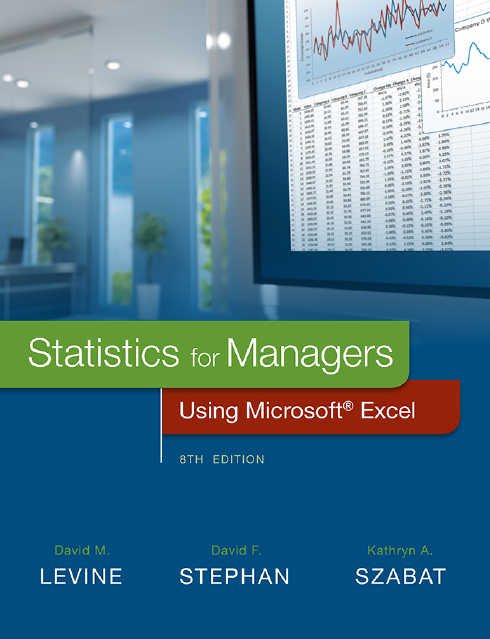
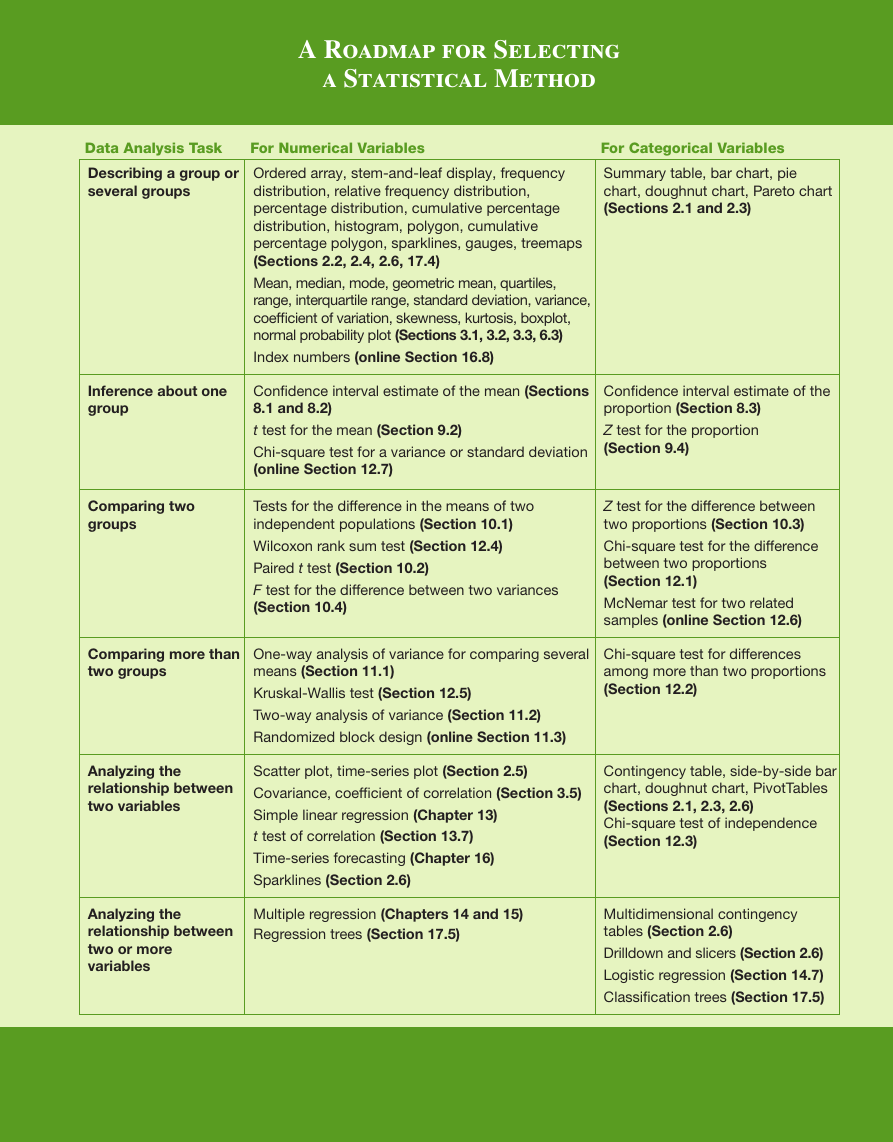

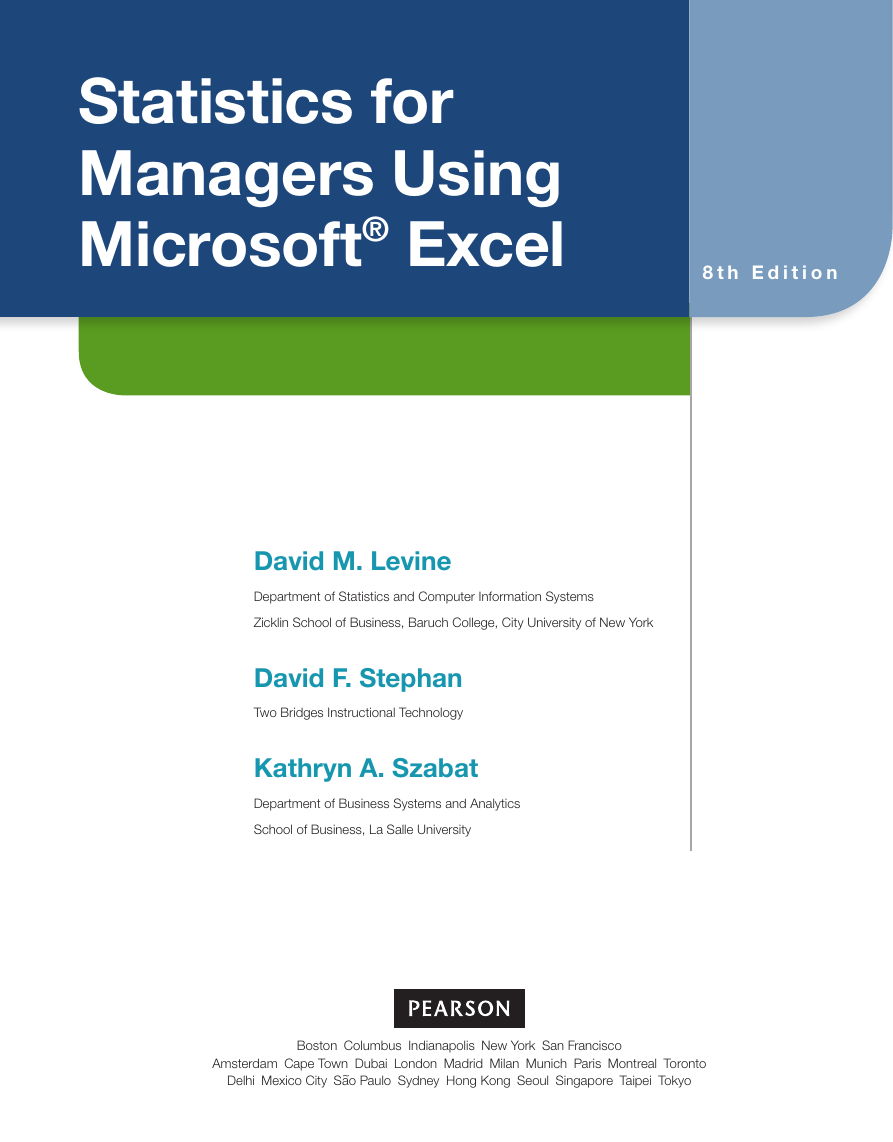
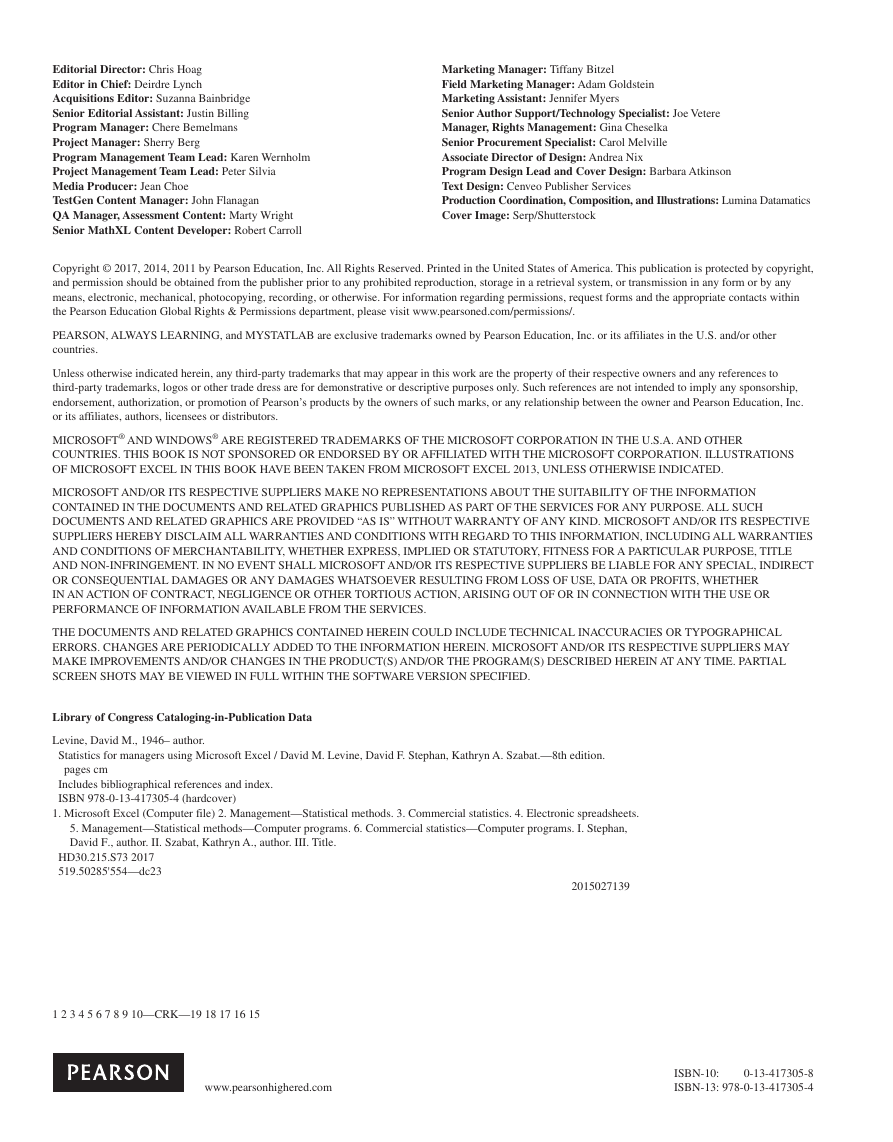

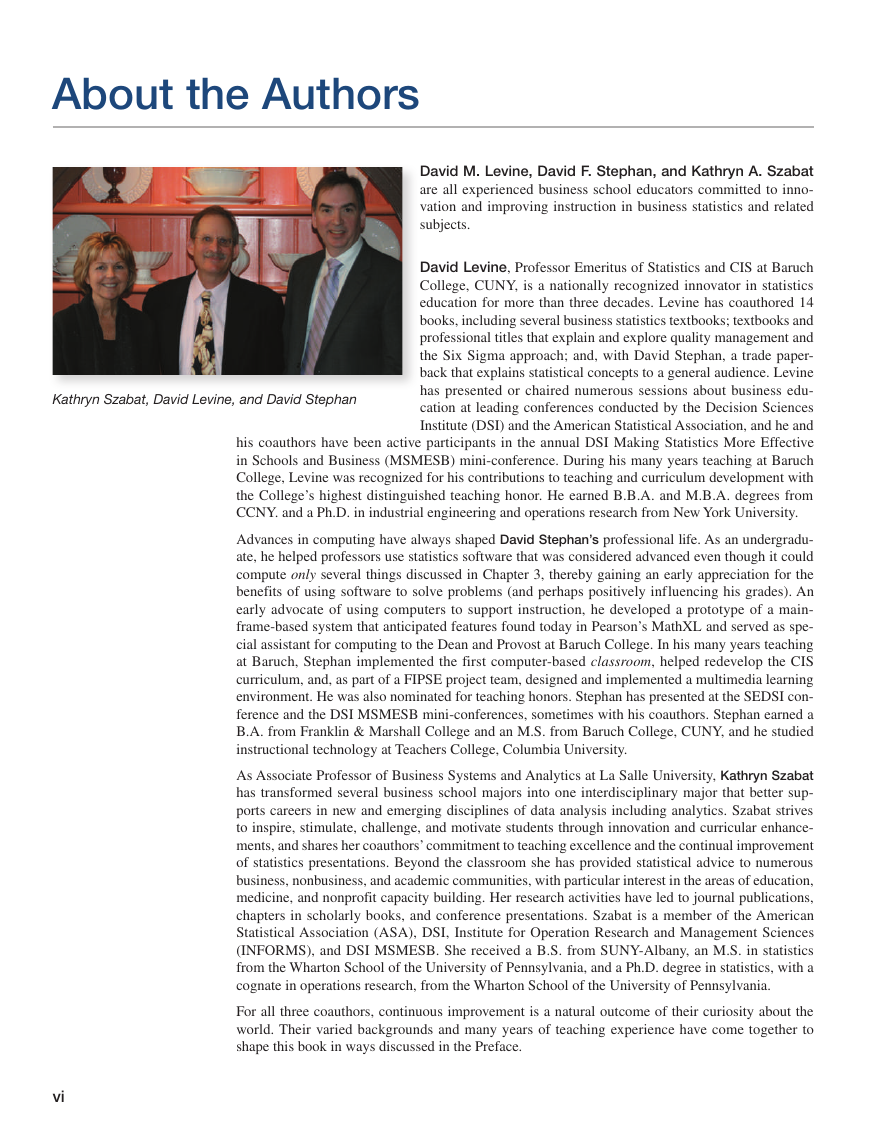
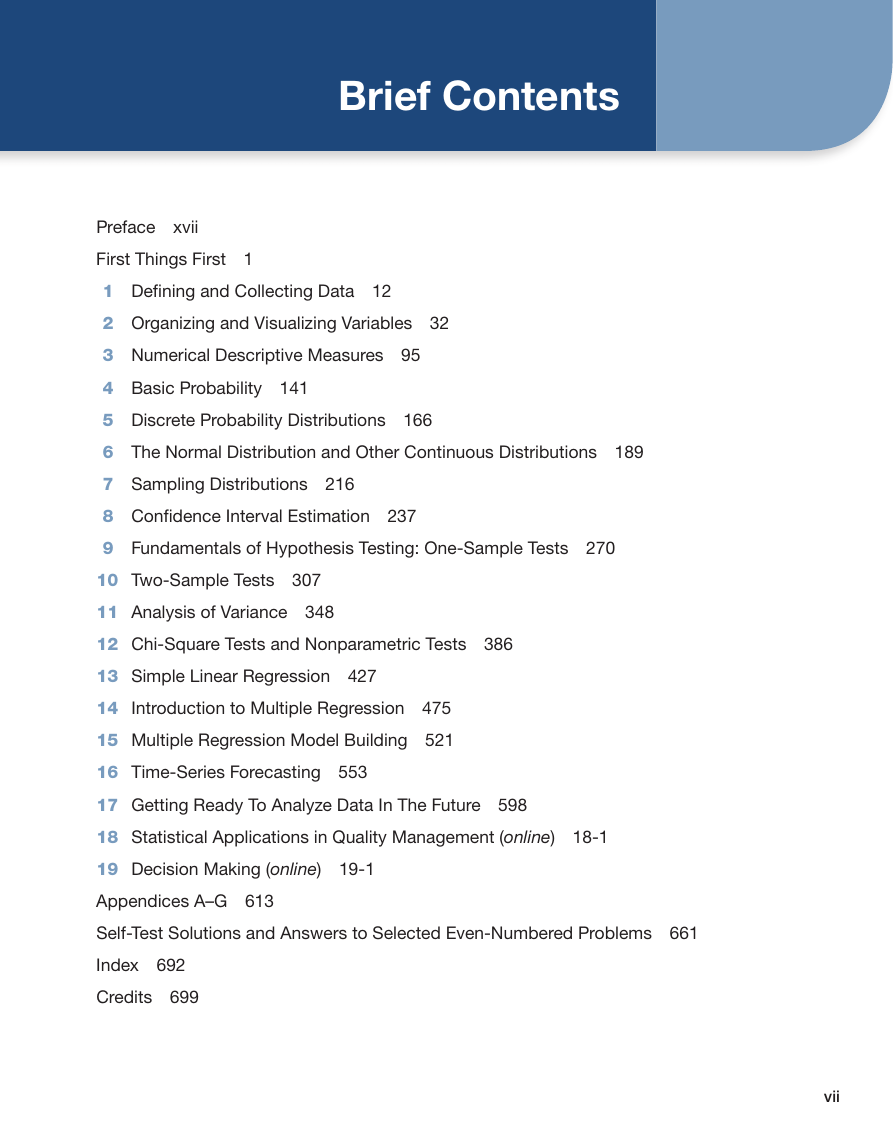








 2023年江西萍乡中考道德与法治真题及答案.doc
2023年江西萍乡中考道德与法治真题及答案.doc 2012年重庆南川中考生物真题及答案.doc
2012年重庆南川中考生物真题及答案.doc 2013年江西师范大学地理学综合及文艺理论基础考研真题.doc
2013年江西师范大学地理学综合及文艺理论基础考研真题.doc 2020年四川甘孜小升初语文真题及答案I卷.doc
2020年四川甘孜小升初语文真题及答案I卷.doc 2020年注册岩土工程师专业基础考试真题及答案.doc
2020年注册岩土工程师专业基础考试真题及答案.doc 2023-2024学年福建省厦门市九年级上学期数学月考试题及答案.doc
2023-2024学年福建省厦门市九年级上学期数学月考试题及答案.doc 2021-2022学年辽宁省沈阳市大东区九年级上学期语文期末试题及答案.doc
2021-2022学年辽宁省沈阳市大东区九年级上学期语文期末试题及答案.doc 2022-2023学年北京东城区初三第一学期物理期末试卷及答案.doc
2022-2023学年北京东城区初三第一学期物理期末试卷及答案.doc 2018上半年江西教师资格初中地理学科知识与教学能力真题及答案.doc
2018上半年江西教师资格初中地理学科知识与教学能力真题及答案.doc 2012年河北国家公务员申论考试真题及答案-省级.doc
2012年河北国家公务员申论考试真题及答案-省级.doc 2020-2021学年江苏省扬州市江都区邵樊片九年级上学期数学第一次质量检测试题及答案.doc
2020-2021学年江苏省扬州市江都区邵樊片九年级上学期数学第一次质量检测试题及答案.doc 2022下半年黑龙江教师资格证中学综合素质真题及答案.doc
2022下半年黑龙江教师资格证中学综合素质真题及答案.doc